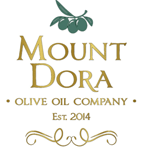UNDERSTANDING EXTRA VIRGIN OLIVE OIL CHEMISTRY PROFILES
At Mount Dora Olive Oil Company freshness and purity come first. We follow two olive crush cycles in the world, a Northern Hemisphere crush (U.S.A., Europe — November-January) and Southern Hemisphere crush (South America, Australia — April-June). By doing so we ensure our customers that they are purchasing the freshest extra-virgin olive oil possible.
What about purity? With the vast majority of imported “extra-virgin olive oils” being a blend of a small percent EVOO and the remainder Canola, Grape Seed, or Safflower oils, it is hard to tell if one can not sample prior to purchase. At Mount Dora Olive Oil Company we allow our customers to sample all of our ultra-premium extra-virgin olive oils prior to making a purchasing decision. More importantly, we proudly display all of the olive oil chemistry which ensure us and our customers that our EVOO’s are FRESH and PURE. In addition to the chemical analysis of each EVOO, we also display sensory ratings (Bitterness, Fruitiness, Pungency) on all of our ultra-premium EVOO’s. Unfortunately, the current regulations on imported extra-virgin olive oil are extremely loose and therefore the majority of so called “extra-virgin olive oils” found in big-box grocery stores and “specialty” shops are not the real deal. Below we present in-depth information on each of the olive oil chemistries that we track.
HARVEST & CRUSH DATE
Although not a chemistry, this information is crucial to determining how fresh an extra-virgin olive oil is. Crush date is very different than an “Expiration” or “Best By” date, as it informs the customer on what month and year the olives were crushed. Our Ultra Premium EVOO’s are ultra fresh for approximately 14 months from the crush/harvest date. We recommend consuming within 18 months.
FREE FATTY ACID (FFA)
Free fatty acid speaks to the condition of the fruit at the time of crush. The higher the FFA, the greater the indication of poor quality fruit such as damaged, overripe, insect infestation, overheating during production, or too much of a delay between harvest and crush. A low FFA is desirable. Low FFA also correlates with a higher smoke point.
OLEIC ACID
A monounsaturated omega-9 fatty acid found in olive oil. Olive oil is generally higher in oleic acid than other vegetable fats. Extra virgin olive oil high in oleic acid has greater resistance to oxidation.
POLYPHENOLS
Polyphenols are a class of antioxidants found in a variety of foods. Polyphenols such as Oleuropein, Oleocanthal, and Hydroxytyrosol impart intensity connected with pepperiness, bitterness, and other desirable flavor characteristics. Recent studies indicate that these potent phenols are responsible for many of the health benefits associated with consuming fresh, high quality extra-virgin olive oil.
PEROXIDES
Peroxide content speaks to the integrity of the olive at the time of crush. Unsaturated free fatty acids react with oxygen and form peroxides, which create a series of chain reactions that generate volatile substances responsible for a typical musty/rancid oil smell. A very low peroxide value is desirable.
PYROPHEOPHYTIN (PPP)
An indicator of the freshness of the olive oil. Degradation of chlorophylls to pyropheophytin was found to take place at a predictable pace, making it possible to gain information about the age of an olive oil. A low PPP content is desirable.
DICYLGLYCEROL (DAGS) Test Score
Measures the proportion of two forms of diacylglycerol: 1,2 and 1,3 which indicates the quality of the fruit, processing, and age of an oil.
Must be greater than 40% (At least a ratio of 40% in the 1,2 formation). The closer to 100%, the healthier and fresher the EVOO. Ours are as high as 98.5%.
In a fresh oil made from sound olives of good quality, the prevalent form of DAG is the 1,2 form where the fatty acids are bonded to a glycerol molecule in the 1 and 2 positions. The bond on the 2 position is weak and easily broken, leading to the migration of that 2 position fatty acid to the 3 position.
- This makes the ratio of 1,2 DAGs to the total DAG’s a good indicator of the quality of the olive fruit and the processing.
- It is also an indicator of the age of an oil, since the migration from 1,2 to 1,3 DAGs takes place naturally as the oil ages.
- Warmer storage temperatures, and higher free fatty acid levels will both accelerate this process.

